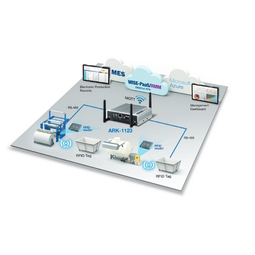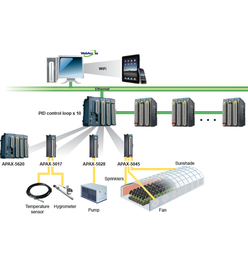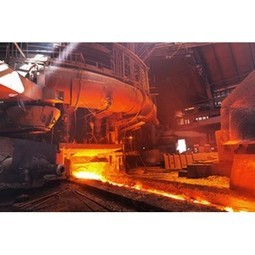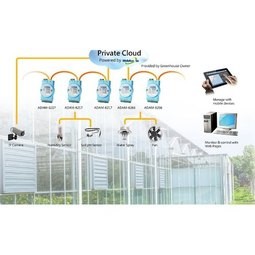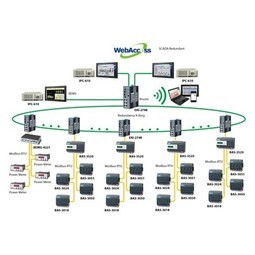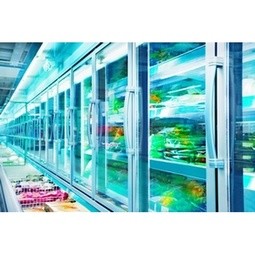Case Studies.
Our Case Study database tracks 18,927 case studies in the global enterprise technology ecosystem.
Filters allow you to explore case studies quickly and efficiently.
-
(5)
- (4)
- (2)
- (1)
- View all
-
(3)
- (1)
- (1)
- (1)
- View all
-
(2)
- (2)
-
(1)
- (1)
- (1)
-
(1)
- (1)
- View all 9 Technologies
- (2)
- (1)
- (1)
- (1)
- (1)
- View all 5 Industries
- (3)
- (2)
- (1)
- (2)
- (2)
- (1)
- (1)
- (6)
Selected Filters
6 case studies
|
IoT Applications and Upgrades in Textile Plant
Advantech
At any given time, the textile company’s manufacturing facility has up to 2,000 textile carts in use. These carts are pushed from room to room, carrying materials or semi-finished products. Previously, a paper with a hand-written description was attached to each cart. This traditional method of processing made product tracking extremely difficult. Additionally, making sure that every cart of materials or semi-finished products went to its correct processing work station was also a problem. Therefore, the company desired an intelligent solution for tracking assets at their factories. They also wanted a solution that would help them collect process data so they could improve their manufacturing efficiency.
|
|
Greenhouse Intelligent Monitoring and Control Solution
Advantech
Farming Orchids is the most successful form of precision farming in Taiwan, and also the most exported flower. Orchids need a specific temperature and humidity conditions to grow and bloom, and its flowering time may not be in line with market demands, so the price collapses when there is overproduction. Therefore, some farmers began to import automated greenhouse control systems for breeding and forcing, which not only improves quality, but also effectively controls the production period and yield to ensure revenue. In 2012, an orchid farmer built a Forcing Greenhouse of about 200 pings (approximately 661 Square Meters) in Tainan, Taiwan. The system integrator adopted Advantech’s APAX-5000 series programmable automation controllers to build the control platform, coupled with Advantech WebAccess HMI/SCADA software, to achieve cloud monitoring. The staff of the orchid field can monitor important data anytime via smart phone, iPad, and other handheld devices, and control the growth and flowering conditions. System requirements: In the past, most environmental control systems of orchid greenhouses in Taiwan used PLCs (Programmable Logic Controller) with poorscalability and control, and could not be connected to the Internet formonitoring from the cloud. For advanced database analysis and networking capability, the PC platform must be adopted. Therefore, PAC Systems (Programmable Automation Controller) with both PLC programming capabilities andPC functions is a better choice.The environmental control of the Orchid greenhouse switches on and off devices like fan, shade net, cooling/heat pump, liquid flow control, water-cooling wall etc. It is controlled by a control panel of electric controllers, and is driven by a motor, to adjust the greenhouse temperature, humidity, and other environmental conditions to the set parameters.
|
|
Continuous Casting Machines in a Steel Factory
Advantech
With a very broad range of applications, steel is an important material and has been developed into the most extensive alloy in the engineering world. Since delivering high quality is absolutely crucial for steel plants, ensuring maximum productivity and the best quality production are the keys to competitiveness in the steel industry. Additionally, working conditions in steel factories are not suitable for workers to stay in for long periods of time, so manufactures usually adopt various machines to complete the steel production processes. However, the precision of these machines is often overestimated and the lack of flexibility also makes supervisors unable to adjust operating procedures. A renowned steel factory in Asia planned to improve its Distributed Control System (DCS) of furnaces as well as addressing the problem of insufficient accuracy. However, most well-known international equipment suppliers can not provide a satisfactory solution and local maintenance because the project needed new technologies to more accurately control equipment operations. By implementing Advantech’s automated monitoring and control solution, steel factories can not only improve the manufacturing processes but can also allow users to add additional functions to the existing system so as to make sure the operation runs at high efficiency.
|
|
Remote Monitoring and Controlling of Greenhouses
Advantech
For people who live and work in big cities, growing their own fruits and vegetables is a dream which is often difficult to realize. But how about renting a greenhouse, and being able to remotely plant seeds, spray water and apply fertilizers through a webpage, and then watching how your crops are growing via streaming video from an IP camera while you occasionally pay a physical visit to your plants at the weekends or holidays to harvest and cook your vegetables at a feast? A group of young Taiwanese entrepreneurs are making their own, and other people’s dreams come true by establishing greenhouse plots for rent. Leveraging the latest Advantech technologies and features provided by the ADAM-6200 series Ethernet I/O series and WebAccess 8.0 HMI/SCADA software, they’ve created a greenhouse automation and remote monitoring solution from which their customers can control and monitor the environment via a virtual dashboard on a computer, smartphone or other web-based device in real time.
|
|
Improving Building Comfort and Energy Savings
Advantech
During the energy crisis of the 1970’s there was a sea-change in the building industry when it paid more attention to the idea of conserving energy and introduced the terms Building Management System (BMS) and Building Automation System (BAS). Continuing rising energy prices and carbonreduction issues have also further spurred the development and deployment of BMS in recent years. However, the early systems were bulky, not user friendly, unreliable, and very expensive. With the advent of computerization, BMS analog signals became digitized so as to be communicated over long distance as well as facilitating the building management process these issues became less.Due to the multiple many management functions and wide range of expertise, modern BMS is quite complex. Successful building management not only needs to link to a multitude of devices but also take account of the suitability of the software for the intended application. Equipped with a web browser-based software package for human-machine interfaces (HMI) and supervisory control and data acquisition (SCADA) which provides automated, centralized and unattended management with a high degree of electronic accuracy, the BMS can fully control the building’s mechanical and electrical equipments and thus effectively monitor energy consumption so that it provides a comfortable, safe and secure environment.Property management is facing various and complex challenges and reducing operating costs have become increasingly important for building owners. As a result, a growing number of new and refitted buildings are being designed to use less energy and focus on the building’s performance. A System Integrator was helping a builder implement advanced BMS for its newest construction project in a creative park in Asia. The construction, a 14-storey building with four underground floors, covers an area of nearly one hundred thousand square meters and contains three distinct sectors - shopping mall, hotel guest room floors and office floors. In order to provide optimal energy management, this BMS needed to be capable of monitoring and controlling a variety of facilities, including air conditioning, power system, plumbing system, fire system, ventilation, elevator, lighting, garden watering and so on. Meanwhile, using one system with an adequate number of nodes in a main control room to manage three different places was a key requirement but each place had to have their own dedicated system and can be controlled independently without mutual interference so as to saving the implementation costs. Due to the need to monitor many areas, there would be tens of thousands of detection points, and the new system also needed to offer remote control capabilities so that building managers or patrol staff can view the status of various facilities in real-time and deal with issues using handheld or mobile devices.
|
|
Convenience Store Energy Saving Application
Advantech
Since electricity costs keep on rising, the bills for convenience stores keep on increasing and unfortunately it’s difficult for convenience stores to raise their prices to maintain the same profit margins. Variable overheads are difficult to budget for and give accountants a headache, therefore one convenience store chain in Thailand has decided to redress the balance and put themselves in chargeof power generation by installing solar panels in their stores.Our customer wanted to reduce their energy costs by at least 10 percent and having installed solar panels in their store locations they needed to be able to send the power to where it was needed and when it was needed. Since the stores are open for 24 hours and it’s onlysunny forroughly 12 of those, it was essential that the power distribution to the lighting and refrigeration units was managed efficiently.
|




